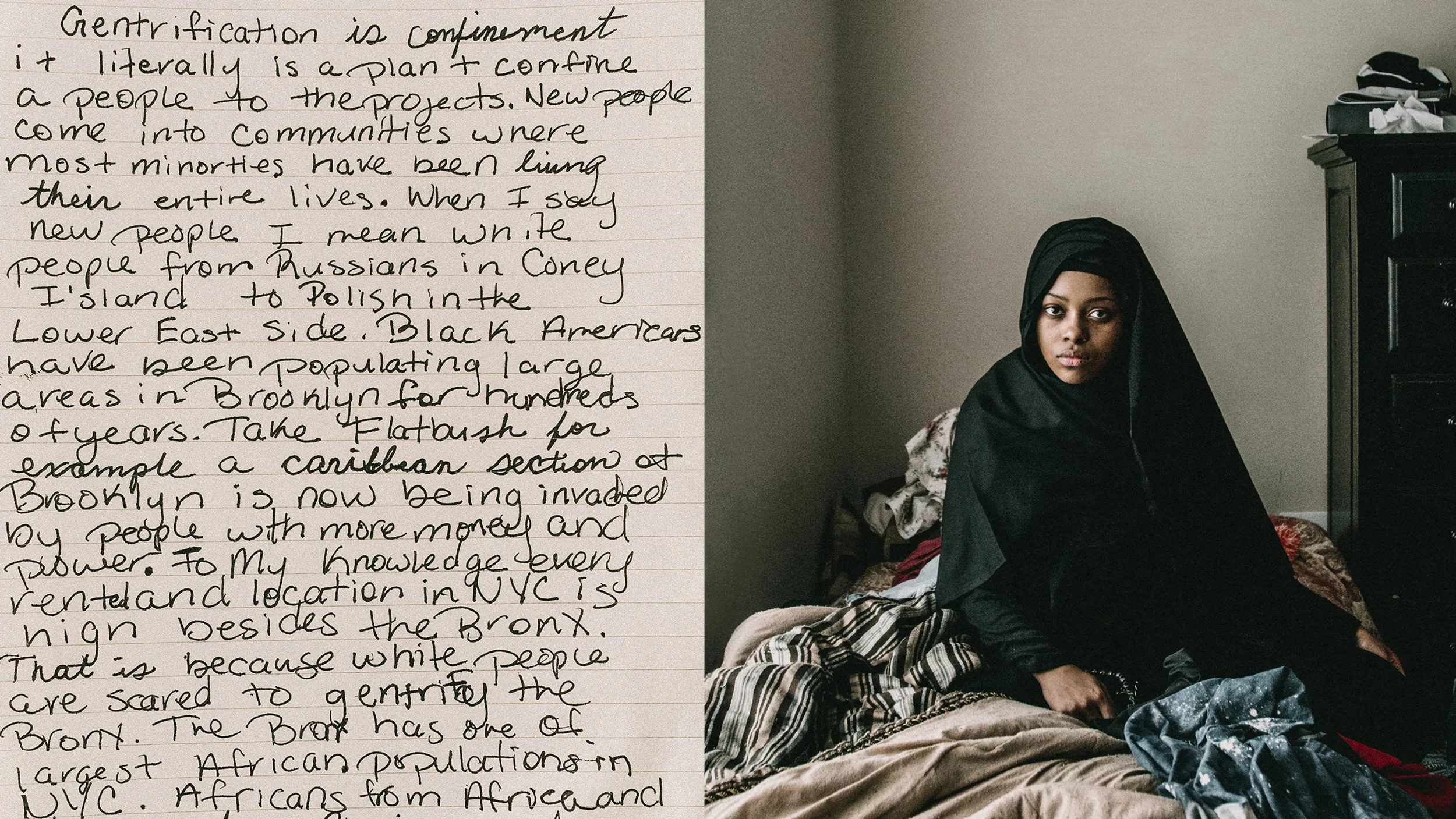This session of our series Optics: A New Way of Seeing Contemporary Culture explores the visuality and neighborhood impact of gentrification.
Corporate murals, empty storefronts, high-rise construction sites, matcha lattes, and pop-up galleries—the signs of gentrification are deeply visual and nearly omnipresent in cities around the country. While we think of gentrification, urban development, and place-making as policy–and real estate–driven concepts, it’s important to pay attention to the role images play in driving large-scale urban change. Join Optics series host Reya Sehgal for an examination of the visuality of gentrification and urban resilience, as well as the forces that are rendered invisible by the image-based speculations that accelerate change in communities everywhere. Sehgal will be joined on stage by educator, cultural producer, and ICP staff member Ariana Faye Allensworth who is an ambassador for the Anti-Eviction Mapping Project, scholar and co-author of Gentrifier Jason Patch, and photographer Haruka Sakaguchi.
Want more on this topic? Join us for Contested City: Gabrielle Bendiner-Viani at Abrons Arts Center on Monday, October 7 at 6:30 PM, as ICP explores how visual culture, gentrification, and displacement intersect and impact communities. Gabrielle Bendiner-Viani will discuss her recent book, Contested City: Art and Public History as Mediation at New York’s Seward Park Urban Renewal Area, on displacement and the activist history of the Lower East Side.
This is a free event, but please register in advance. ICP Members have access to preferred seating in our reserved members’ section.
Read our public program attendance policies.
About the Series
Hosted by artist and curator Reya Sehgal, Optics: A New Way of Seeing Contemporary Culture invites critics, artists, and imagemakers to analyze the pictures that shape contemporary culture and current events. The series considers the images, visual communications, and vision-related technologies that impact our times. In our current image-saturated society of 24-hour news cycles, social media, and memes, an understanding of the ways in which pictures are shaped, produced, distributed, remixed, and go viral is vital to an understanding of culture itself.
Bios
Ariana Faye Allensworth is the Senior Manager of Teen Programs and Neighborhood Engagement at ICP. She is a core member of the Anti-Eviction Mapping Project, a multimedia storytelling collective documenting the dispossession and resistance of residents facing gentrifying landscapes in New York City, Los Angeles, and the San Francisco Bay Area.
Haruka Sakaguchi is a Japanese documentary photographer currently residing in Brooklyn, New York. She was born in Osaka, Japan and immigrated to the US with her parents when she was three months old. Haruka's documentary work focuses on cultural identity and sense of place, and has been published on The New York Times, TIME, The New Yorker, Newsweek Japan, PDN, British Journal of Photography, and Buzzfeed. Her work has been exhibited at the Nobel Peace Center and the Annenberg Space for Photography, among other institutions.
Reya Sehgal is an interdisciplinary artist and curator based in New York City. She has curated exhibitions and public programs at the Berkeley Art Museum/Pacific Film Archive, Brown University, Queens Museum, Project for Empty Space, Knockdown Center, and BRIC. Her artistic work has been seen, and experienced, at the DUMBO Arts Festival, AS220, Distillery Gallery, RISD Museum, Arab American National Museum, and Massachusetts College of Liberal Arts. Sehgal is a member of the DIVERSITY FELLOWS! performance collaborative, and was the 2018–2019 post-graduate fellow in visual culture at the International Center of Photography.
Jason Patch is a professor of sociology and urban studies at Roger Williams University in Bristol, Rhode Island. He is a co-author of the book Gentrifier (University of Toronto Press, 2017). Drawing on a variety of perspectives, the authors combine interviews, case studies, and analysis with their first-hand experience as academics, parents, and spouses living in gentrifying cities. Gentrifier challenges readers' own roles within neighborhood change. For over a decade, Patch has lived with his family in Providence, Rhode Island. Before then he lived in Manhattan and Brooklyn.


